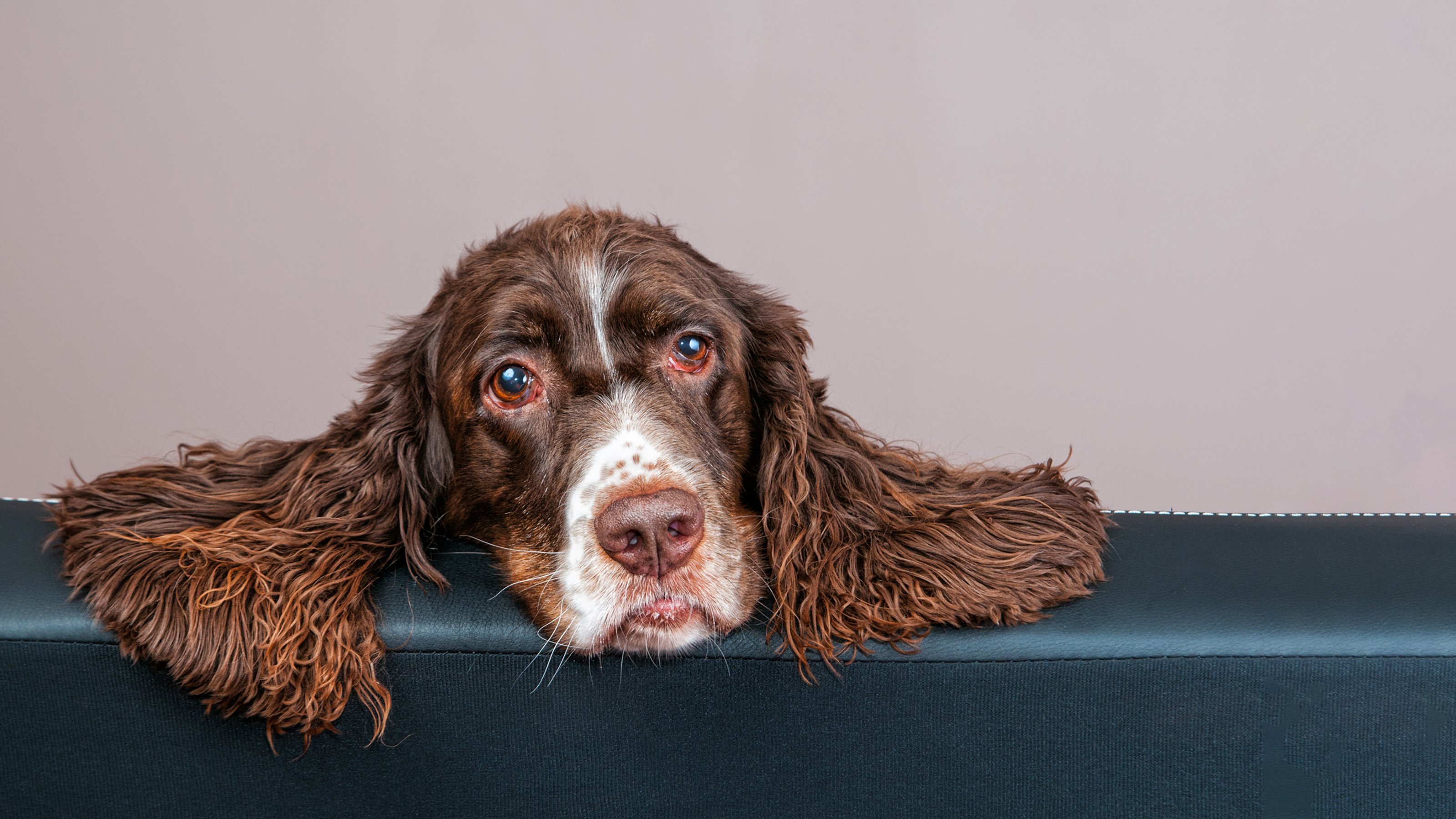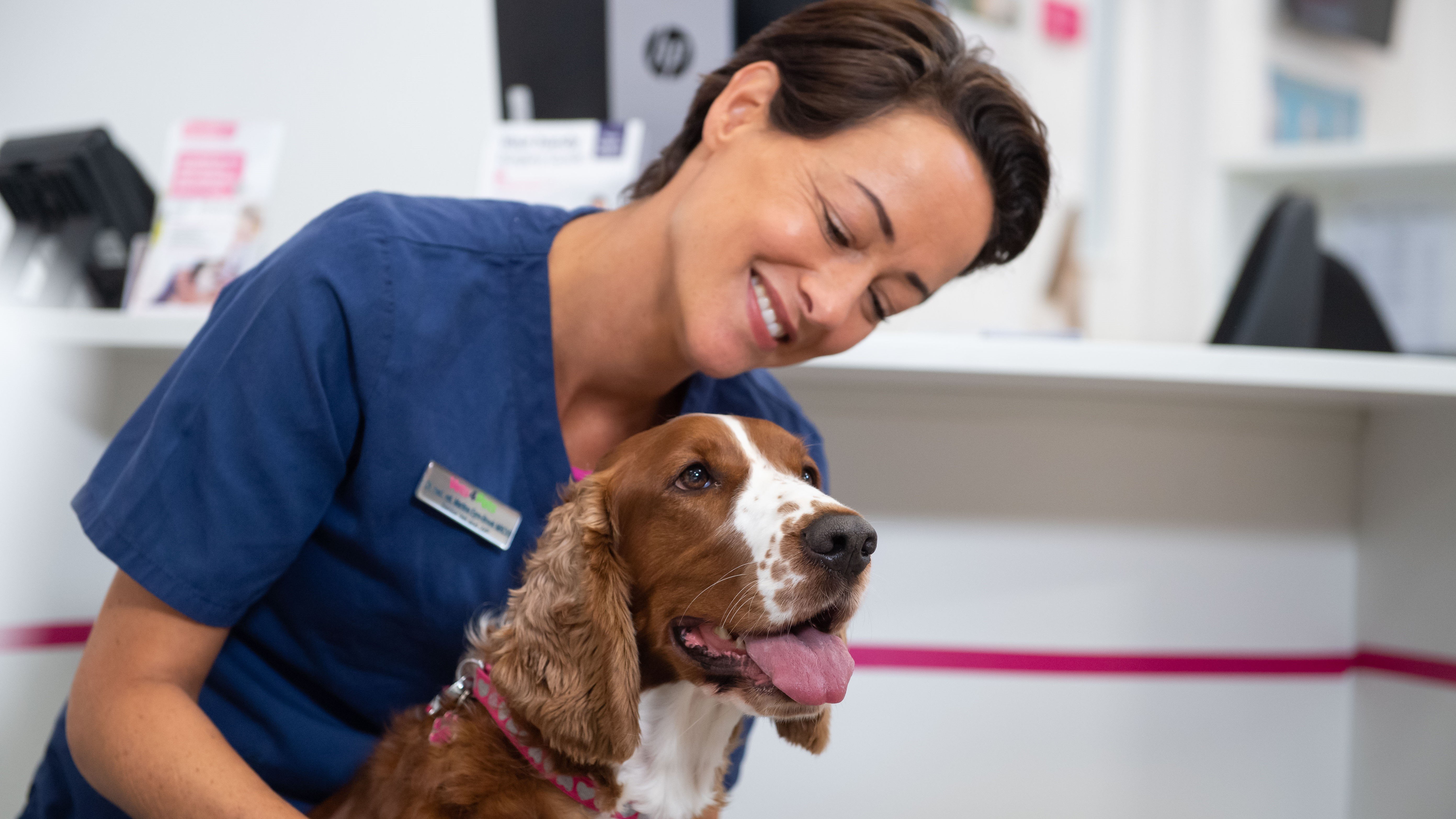
How to spot and treat yeast infections in dogs
Yeast infection, or yeast dermatitis, is very common in dogs. What causes a yeast infection in a dog, what are the symptoms to look out for, and how are yeast infections in dogs treated?
On a healthy dog’s skin, there are small numbers of microorganisms that we call commensals. One of these commensals is the peanut-shaped yeast Malassezia pachydermatis. We usually find Malassezia in sites ‘where the inside of the dog meets the outside’, for instance, in the external ear canals, around the lips and under the tail.
Under normal conditions, Malassezia don’t cause any problems. However, if something suppresses the dog’s immunity or compromises the barrier function of the skin, Malassezia can begin to multiply and this overgrowth can lead to Malassezia dermatitis, sometimes called yeast dermatitis, in dogs.
What are the symptoms of a yeast infection in a dog?
Some of the more usual symptoms of yeast dermatitis in a dog are:
Itching (pruritus) – this can be intense. It can be limited to specific areas or it can make the dog itchy all over. Affected areas often appear pink or sore, and you might see saliva staining on the coat from prolonged licking. Saliva staining is easy to spot. The hairs tend to turn a pinkish brown where the minerals from the dog’s saliva have stained it. Even ears can look saliva-stained if a dog has been scratching at their ears and licking their paws.
Recurrent or chronic ear infections (otitis externa) – Sometimes, a dog who has been treated for bacterial otitis externa goes on to develop a yeast infection. A dog with a yeast infection in their ear often has a brownish, waxy, smelly, ear discharge.
A strong smell – One noticeable feature of yeast infection in dogs is an unpleasant smell. Malassezia infections tend to produce a characteristic, strong, musty smell.
Seborrhea – a term that describes flaky, sometimes greasy skin. Irritation causes the sebaceous glands in the skin to become over-active and secrete an excess of sebum. The dead skin cells that normally leave the surface of the skin unnoticed as a ‘powder’ can no longer do this, as they’re glued together by the excess sebum. Clumps of dead skin cells start to appear as yellowish or greyish flakes and the underlying skin often looks pink and inflamed.
Crusty areas or raised, crusty spots may appear on your dog’s skin.
Thickened or darkened areas of skin – If the skin has been affected for a while, chronic changes may begin to appear. The skin might start to look leathery or ‘elephant-like’, which we call lichenification; or the skin may become hyperpigmented and you’ll see greyish or darkened areas where the skin used to be pale.
Nailbed infections (paronchia) – Your dog may seem to pay a lot of attention to their feet, licking or chewing at the toes or nails. If you look closely, the nailbed might seem sticky or brownish and the skin around the nail may look pink, shiny or swollen.
Crusty or hairless areas around the mouth.
Inflammation in skin folds (intertrigo) – Where there are skin folds, the combination of the skin surfaces rubbing together, high humidity and poor air circulation produces an environment that favours overgrowth of skin microbes (yeast and bacteria). The chemicals produced by the microbes irritate and damage the skin, leading to inflammation and infection.
More about yeast infections in dogs
Depending upon the extent of the lesions and the severity of the symptoms, a yeast infection on a dog’s skin might be treated using topical (surface) treatments, systemic medications (usually oral) or a combination of both.
Practical considerations also need to be taken into account. Your dog’s coat type and temperament could influence which types of treatment are going to be practicable for you to use. Also, your own lifestyle and existing commitments might determine how easily you’ll be able to complete a particular course of treatment, or whether an alternative approach might be required. Skin problems can take weeks to resolve and patience and perseverance will be needed.
When your vet prescribes medication for your dog, it’s important you feel confident with how to use or apply the products. For instance, some shampoos used to treat yeast infection in dogs need to be left on for 10 minutes before they’re rinsed off, so that the active ingredients have time to work. If your dog needs to have ear drops, ask your vet or nurse to show you the best way to apply these. A dog’s ear canal is L-shaped and, unless the drops are applied correctly, the product may not get far enough into the ear canal to do any good.
Don’t be afraid to ask for guidance in the use of medications and treatments – it’s far better than finding out too late that they haven’t been effective because you didn’t understand the correct way to use them.
Usually, treatment for yeast or fungal skin infection in dogs lasts for a minimum of a few weeks and is continued for at least seven to 10 days beyond an apparent cure, so it’s vital that the medications are used as prescribed during this time, even if your dog looks normal.
Some dogs are actually hypersensitive (allergic) to Malassezia yeast and they are likely to get recurrent or persistent yeast infections. If your vet suspects Malassezia hypersensitivity, they can do further testing and instigate appropriate treatment.
The best way to avoid your dog getting a yeast infection is to try to prevent them from developing problems that either affect their immunity, or that upset the balance of skin microbes and the barrier function of the skin. Keep your dog as fit and healthy as you can. This minimises the chances of them getting certain diseases that would suppress their immune system, such as diabetes.
Keeping your dog’s coat and skin clean, using products designed for their coat type and applying the products correctly, can help to keep the skin environment healthy.
Products made for humans (even baby shampoo) can irritate dog’s skin and reduce its ability to act as a barrier, as can using a hot hair dryer after bathing your dog. Your dog groomer can help you to plan the most suitable routine to help keep your dog’s coat and skin healthy. This could also involve periodic clipping of hair between toes or under heavy ear flaps in some breeds, to enable air to circulate.
If your dog is healthy, with a normal balance of skin commensals, you may not need to clean their ears or bathe them very often at all. Your vet team will be able to advise you whether you need to clean your healthy dog’s ears routinely.
No. Yeast are present in low numbers on the skin of all dogs. They only become a problem when the dog’s immune system can’t keep them under control or if the skin barrier is compromised for any reason.
The paws are a common site for a yeast infection in a dog. If your dog is licking or chewing at their paws, they may have some pain, discomfort or itching there. Yeast infections are one of many reasons why a dog’s paws might be irritated, and constant licking can cause more inflammation and discomfort. It’s best to ask your vet to check your dog if you’re concerned their paw, or any other part of their body, seems red or irritated.
If a yeast infection has been present or recurrent for some time, it can cause dark spots or patches on the affected areas. Other problems, including thyroid conditions and external parasites, can cause similar symptoms. Comedones are smaller black spots, more like blackheads, that are easiest to see on the tummy. These can have different underlying causes, including Cushing’s disease (hyperadrenocorticism). In either case, it’s best to ask your vet to take a look.
Normally, yeast occur in dogs’ ears in low numbers and doesn’t cause problems.
However, some dogs are more likely than others to get a fungal, or yeast infection in their ear. If a dog has heavy, furry ear flaps, there may be inadequate ventilation and the environment inside the ear canal might support yeast overgrowth. Infections are also more likely in ears that are repeatedly wet and soggy, for instance, in dogs who swim a lot.
The good news is that there is effective treatment for yeast infection in a dog’s ear. If you’re concerned about your dog’s ears, your vet will be able to check what’s going on, treat any infection and help you to manage any underlying causes.
Yeast infections can affect different areas on a dog’s body, although the commonest areas include the paws, the ears and where skin is folded, for instance under the tail or in the axillae (armpits).
An overgrowth of yeast could cause a rash on a dog’s belly, but there are other possible causes, including allergies, insect bites and bacterial infections. Sometimes, a rash on a dog’s belly is the only visible sign of a skin problem but it could also be part of a larger collection of symptoms, for instance, otitis externa (ear infections and inflammation) might also be present.
Your vet can examine your dog from nose to tail, including their skin, to find out what’s causing the rash and provide the right treatment.
There’s no diet specifically designed to treat or reduce yeast in dogs. However, a common reason dogs have a yeast infection is because they have an underlying allergy to something either in their diet, or in the environment (which is called atopy).
Diets aimed at supporting a dog’s skin or immune system may help to lessen the incidence of yeast infections by removing or disguising ingredients to which the dog is allergic and by improving the barrier function of the skin. This gives the dog’s immune system a better chance at keeping yeast under control on the surface of the skin.
Health Plans to keep your dog healthy
At Vets4Pets we offer a range of Health Plans that make essential routine treatments more affordable. You'll save money on things like annual vaccinations, flea and worm treatment and routine health check-ups.

Dog Advice
Read more of our expert dog advice to keep your dog happy and healthy.
